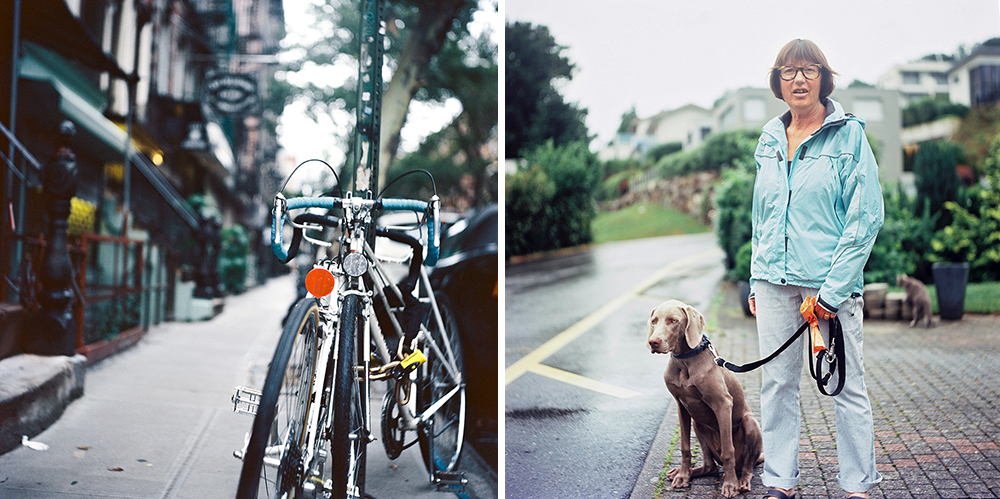“To Push” or “Not to Push” That is the question!
OK, so if you’ve made it this far it means you’ve been reading/hearing about this concept of “pushing” film for a while. You know it has something to do with “stops” but sometimes it feels confusing because you see all sorts of amazing pictures with stuff like “Fuji 400H shot @ 100” or “overexposed two stops” and then you see “TriX 400 shot and developed @ 1600” and it all just starts to sound closer to mathematics than photography. Confused? Then read on:
We call “Pushing Film” when we chemically increase the film’s exposure during the development process. There might be a couple reasons to do so. For example, let’s say you’ve only got Kodak Portra 400 loaded on your camera while you’re at a wedding, and you enter the church for the ceremony. You take a meter reading and for 400 ISO at apperture f2 the meter says you should shoot at 1/15 speed. Panic arises the moment you associate that shutter speed with blurry pictures either due to camera shake (hello shaky hands!) or the subject’s movement. Here’s one situation when PUSHING FILM would be quite useful. Imagine you had 1600 ISO speed loaded on your camera… That’d be cool.. those 2 extra steps would make such a difference… the meter reading would now say “1600 ISO at f2 1/60 speed”, and you know you’ve taken some decent shots at 1/60. OK, so no need to imagine that 1600 ISO roll, just shoot the Kodak Portra 400 like it’s 1600 ISO and ask the lab to push that roll 2 steps. Needless to say you should mark that on the roll somehow so that it won’t get mixed up with all those Portra 400 you shot before the ceremony at their regular 400 ISO.
So when your lovely package arrives to Carmencita HQ’s (along with those wonderful chocolate bars!) we’ll take that Kodak Portra 400 roll with the handwriten “Push to 1600” note and let it develop longer than the “unlabeled” Portra 400. That way you’re happy with your perfectly-exposed/non-blury church shots, your client is happy with their pictures and we’re happy we made your day! (again, thanks for the chocolate bars!)
THE WHOLE PUSHING/PULLING/OVEREXPOSING/UNDEREXPOSING/ISO RATING MISUNDERSTANDING
So, as some of you might have realised, you are essentially UNDER-EXPOSING your Portra 400 by two stops by making it an “imaginary 1600 roll” and asking
us to chemically compensate for that..
Here is where the confusion might kick in, right? “Underexpose? I heard that’s bad… I usually overexpose.. But isn’t that done in-camera? At what ISO should I rate my film? Will this expired film be OK? Should I buy more chocolate for the awesome guys at Carmencita?”
Here’s the thing. Pushing is done chemically by the lab. Overexposing (or underexposing) whether it be by changing your ISO (rating film at different ISO than box speed) or not is done in-camera by the photographer. For example; we all know that color negative film looks great when overexposed. So you could meter your subject’s shadow and let’s say the meter says “1/1000 at f2” for your Portra 160: so if you wanted those creamier skin tones with more detail on the shadows you’d overexpose a stop and shoot that at “1/500 f2”. Needles to say you would have gotten the same results by “rating” the film at ISO 80 in your lightmeter and shooting exactly what the meter told you (hint: 1/500 at f2!)
Kodak Ektar 100 shot and pushed to 400. Photos by Nico Jenni
CONSIDERATIONS WHEN THINKING ABOUT PUSHING FILM
So all that being said: why push film? Our church example is a very obvious reason. With the very few high-ISO film stocks we currently have it’s great knowing there’s an alternative and no reason to be intimidated by low-light situations.
However it must be noted that pushing film has it’s “side effects”, most notably an increase in contrast/grain and general detail loss in the shadows. Some films lend themselves better to pushing; like most black and white films and the Fuji Provia 400 slide film. Pushed color negative film results vary a lot. In our experience Kodak Portra for a well-lit scene handles pushing pretty well. If the the light source is not that great (like distant tungsten lamp posts mixed with hallogen lights) the colors can get a little funky, but hey, sometimes you just don’t get to decide what light you shot in! 😉
WHAT ABOUT PULLING?
Ilford Delta 3200 shot and pulled to 800. Photos by Buenaventura Marco
We call pulling when, let’s say you only have Ilford 3200 ISO film and you’re shooting a family session at bright daylight ( #truestory). Your camera only goes to 1/1000 speed and you’d hate to shoot the whole thing at f16… So you can shoot the roll like it’s 800 ISO and the ask the lab to PULL. That would mean we would develop that particular roll for less time, exactly the time needed for 2 stops less than the actual 3200 ISO that would be the “box speed”.
NOTE: Pulling is less common since it’s really not that frequent to have a higher ISO film than you wished for AND color negative film looks really great overexposed, so even if you shot a Portra 800 at noon and overexposed it like 4 stops it would probably still look great. Yes, film is awesome in case you were wondering!
OK, off to eat a couple more chocolate bars before lunch brake…




